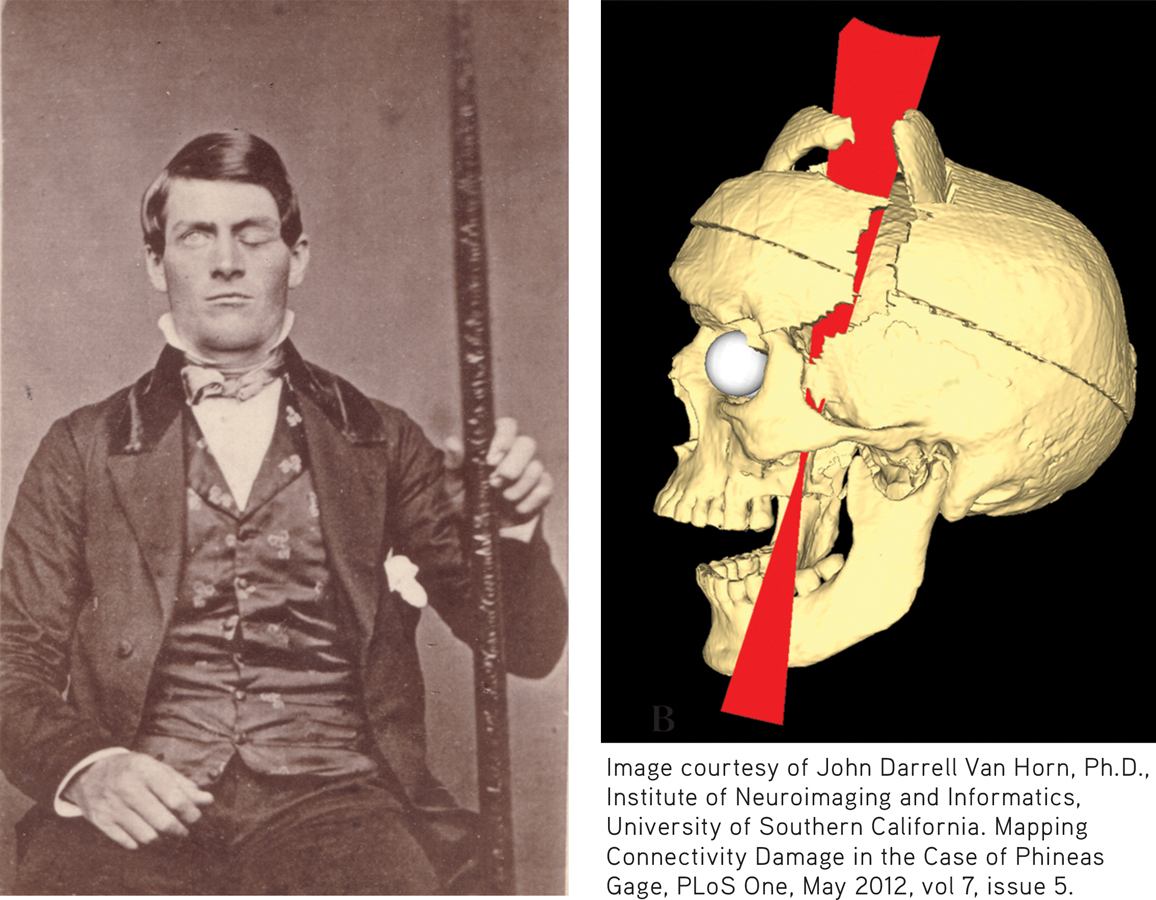
Focus on the Frontal Lobes: The Famous Case of Phineas Gage Early interest in the frontal lobes was sparked by the famous case of Phineas Gage, a railroad foreman who suffered a horrendous accident in 1848. A freak explosion shot a three-foot-long iron bar through Gage’s skull, piercing his brain and exiting out the top of his head. Gage, shown here holding the iron bar, miraculously recovered, but after the accident the formerly conscientious and soft-spoken foreman became bad-tempered and irresponsible.
After Gage’s death in 1861, his physician proposed that Gage’s personality changes were caused by damage to his frontal lobes (Harlow, 1868). More than a century later, contemporary neuroscientists studying Gage’s skull confirmed that Gage’s left frontal lobe had been severely damaged (Damasio & others, 1994; Ratiu & Talos, 2004). More recently, models created by neuroscientist John Van Horn and his colleagues (2012) point to probable damage to the white matter connections between Gage’s frontal lobe and other brain regions associated with emotion and memory. This disconnection may have contributed to Gage’s personality changes and lack of emotional control after the accident.
After Gage’s death in 1861, his physician proposed that Gage’s personality changes were caused by damage to his frontal lobes (Harlow, 1868). More than a century later, contemporary neuroscientists studying Gage’s skull confirmed that Gage’s left frontal lobe had been severely damaged (Damasio & others, 1994; Ratiu & Talos, 2004). More recently, models created by neuroscientist John Van Horn and his colleagues (2012) point to probable damage to the white matter connections between Gage’s frontal lobe and other brain regions associated with emotion and memory. This disconnection may have contributed to Gage’s personality changes and lack of emotional control after the accident.
Image courtesy of John Darrell Van Horn, Ph.D., Institute of Neuroimaging and Informatics, University of Southern California. Mapping Connectivity Damage in the Case of Phineas Gage, PLoS One, May 2012, vol 7, issue 5.